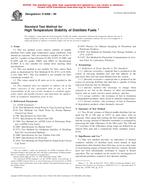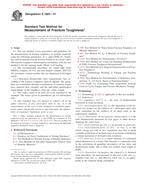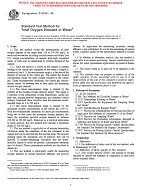1.1 These test methods cover the determination of carbon, sulfur, nitrogen, and oxygen, in steel and in iron, nickel, and cobalt alloys having chemical compositions within the following limits:
| Element | Concentration Range, % |
| Aluminum | 0.001 to 18.00 |
| Antimony | 0.002 to 0.03 |
| Arsenic | 0.0005 to 0.10 |
| Beryllium | 0.001 to 0.05 |
| Bismuth | 0.001 to 0.50 |
| Boron | 0.0005 to 1.00 |
| Cadmium | 0.001 to 0.005 |
| Calcium | 0.001 to 0.05 |
| Carbon | 0.001 to 4.50 |
| Cerium | 0.005 to 0.05 |
| Chromium | 0.005 to 35.00 |
| Cobalt | 0.01 to 75.0 |
| Columbium | 0.002 to 6.00 |
| Copper | 0.005 to 10.00 |
| Hydrogen | 0.0001 to 0.0030 |
| Iron | 0.01 to 100.0 |
| Lead | 0.001 to 0.50 |
| Magnesium | 0.001 to 0.05 |
| Manganese | 0.01 to 20.0 |
| Molybdenum | 0.002 to 30.00 |
| Nickel | 0.005 to 84.00 |
| Nitrogen | 0.0005 to 0.50 |
| Oxygen | 0.0005 to 0.03 |
| Phosphorus | 0.001 to 0.90 |
| Selenium | 0.001 to 0.50 |
| Silicon | 0.001 to 6.00 |
| Sulfur (Metal Standards) | 0.002 to 0.35 |
| Sulfur (Potassium Sulfate) | 0.001 to 0.600 |
| Tantalum | 0.001 to 10.00 |
| Tellurium | 0.001 to 0.35 |
| Tin | 0.002 to 0.35 |
| Titanium | 0.002 to 5.00 |
| Tungsten | 0.005 to 21.00 |
| Vanadium | 0.005 to 5.50 |
| Zinc | 0.005 to 0.20 |
| Zirconium | 0.005 to 2.500 |
1.2 The test methods appear in the following order:
| Sections | |
| Carbon, Total, by the Combustion-Instrumental Measurement Method | 9-19 |
| Nitrogen by the Inert Gas Fusion-Thermal Conductivity Method | 31-41 |
| Oxygen by the Inert Gas Fusion Method | 42-53 |
| Sulfur by the Combustion-Infrared Absorption Method (Calibration with Metal Standards) | 54-64 |
| Sulfur by the Combustion-Infrared Absorption Method (Potassium Sulfate Calibration) | 20-30 |
1.3This standard does not purport to address all of the safety concerns, if any, associated with its use. It is the responsibility of the user of this standard to establish appropriate safety and health practices and determine the applicability of regulatory limitations prior to use. Specific hazards statements are given in Section 5.
Product Details
- Published:
- 11/10/2000
- Number of Pages:
- 20
- File Size:
- 1 file , 190 KB


